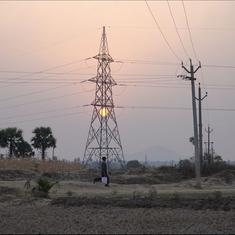Flexi fare system in premium trains reduced occupancy, increased revenue, shows CAG report
A Comptroller and Auditor General report for year ending March 2017 showed that Rajdhani, Shatabdi and Duronto trains have carried 6.75 lakh fewer travellers.

The flexi fare system introduced by the Indian Railways in premium trains has resulted in lower occupancy, but earnings from such trains has increased by Rs 552 crore.
According to a report published by the Comptroller and Auditor General for year ending March 2017, premium trains including the Rajdhani, Shatabdi and Duronto have carried 6.75 lakh fewer travellers between September 9, 2016 and July 31, 2017, compared to the corresponding period in 2015-’16.
“There is a need for review and fine-tuning in the scope of the [flexi fare] scheme so that not only more revenue is earned but a number of passengers also increase, thus, further enhancing revenue,” said the report.
The flexi fare system was introduced in September 2016, under which ticket fares increased 10% with every 10% of the seats sold, with a maximum hike of 1.5 times the normal fares in sleeper, AC chair car and two-tier AC classes and 1.4 times in three-tier AC.
“Wherever dynamic/enhanced fare was introduced, the occupancy was very low,” the CAG report said. “However, this aspect was not taken into consideration while introducing the flexi fare system in all Rajdhani, Duronto and Shatabdi trains irrespective of demand and occupancy. Even in AC 3 class, which was one of the most profitable classes, the occupancy dropped significantly after the introduction of flexi fare and the vacant berths increased from 0.66 per cent in pre-flexi period to 4.46 per cent in post-flexi period.”
The report showed that premier trains carried 2.40 crore passengers between September 9, 2016 and July 31, 2017 when the flexi fare system was introduced as compared to 2.47 crore passengers during the corresponding period in 2015-’16.
“The occupancy of mail and express trains in the routes of premium trains was found to be much more than the premium trains checked between October 2016 and February 2017,” the report said, adding that passengers preferred to travel by mail and express trains despite the longer travel time.
The report also took into consideration air fares for 13 sectors, showing that taking a flight was cheaper than a train for several routes. “While in air fares the prices of tickets increase with increase in demand, in flexi fare, there is a fixed increase in fares after every 10 per cent of the tickets booked irrespective of the demand,” it said. “By paying a higher price for an air ticket, a passenger is ensured a confirmed seat, but a passenger who purchases a waitlisted train ticket by paying a higher amount does not have an assurance of confirmed ticket.”









